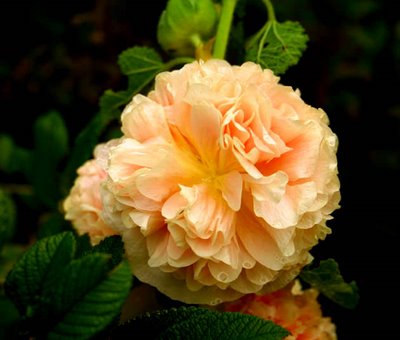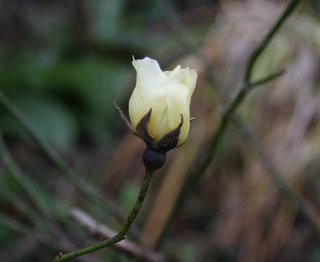And even though a lot of the real showy tulips can only be treated as annuals in our climate, I have planted a lot again this year. Some of them are Triumph and Darwin tulips, which do come back for a few years; others, I simply must have because they are good for my gardening soul. Apricot Parrot is one of them. I was hooked instantly on this tulip when I saw it grown in a pot at Ouestville Perennials
in the spring of 2005;
 I’ve planted a dozen together with Spring Green tulips, which are a refreshing white and green combination. This will give me something very nice to anticipate for next spring.
I’ve planted a dozen together with Spring Green tulips, which are a refreshing white and green combination. This will give me something very nice to anticipate for next spring. I’m a bit late in putting entries on bloomingwriter because I was away working last week; spent a couple of days in New Brunswick, including a wonderful stay at the Inn on the Cove & Spa.
 If I could swing it, I’d go there overnight at least once a month because this is most decidedly an escape from the ordinary and hectic demands of life. Located, as its name suggests, right on a quiet cove in Saint John, it’s the ideal stress reliever. From the kingsized bed and Jacuzzi tub in my room—with its own patio looking out on the Bay—to the marvelous meals prepared by Ross Mavis, the owner and chef, to the utter decadence of a treatment at the spa, it was an exercise in pure relaxation and restoration. I left feeling most decidedly like a better person—or at least, a person who was feeling much better! And yes, even in November, it’s a gorgeous spot.
If I could swing it, I’d go there overnight at least once a month because this is most decidedly an escape from the ordinary and hectic demands of life. Located, as its name suggests, right on a quiet cove in Saint John, it’s the ideal stress reliever. From the kingsized bed and Jacuzzi tub in my room—with its own patio looking out on the Bay—to the marvelous meals prepared by Ross Mavis, the owner and chef, to the utter decadence of a treatment at the spa, it was an exercise in pure relaxation and restoration. I left feeling most decidedly like a better person—or at least, a person who was feeling much better! And yes, even in November, it’s a gorgeous spot.  I took a stroll on the stony beach and picked up a couple of lower Bay of Fundy pebbles for the garden here, and at night, turned off the heat in my room and opened the window so I could listen to the most beautiful music in the world—the sound of waves tumbling in to shore.
I took a stroll on the stony beach and picked up a couple of lower Bay of Fundy pebbles for the garden here, and at night, turned off the heat in my room and opened the window so I could listen to the most beautiful music in the world—the sound of waves tumbling in to shore. Back to reality and my own yard, however, is always pleasant. We’ve finally had a couple of hard frosts but despite that, some annuals close to the house keep right on growing—and even flowering, in the case of one enthusiastic snapdragon. One of the pot cyclamen is blooming out under the spruce trees, an amazing splash of fuchsia among the deep rich greens of hellebores, wild ginger, and slowly winding-down ferns. But the plant that has most caught my love this fall (other than the heathers, about which I’ll say more later) is this wonderful euphorbia that I planted last spring. I’ve extolled its virtues before, but as the autumn stretches towards solstice and it still is gorgeous, I grow to love it even more.

Unfortuntately, I still don’t know which one it is—as it’s suffering from LOLA syndrome—Lost Label. I do know that I got it at Spencer’s Nursery in Shelburne, so perhaps some kind soul will set me straight on its species and cultivar. Whatever it is, it’s a winner in my books.






